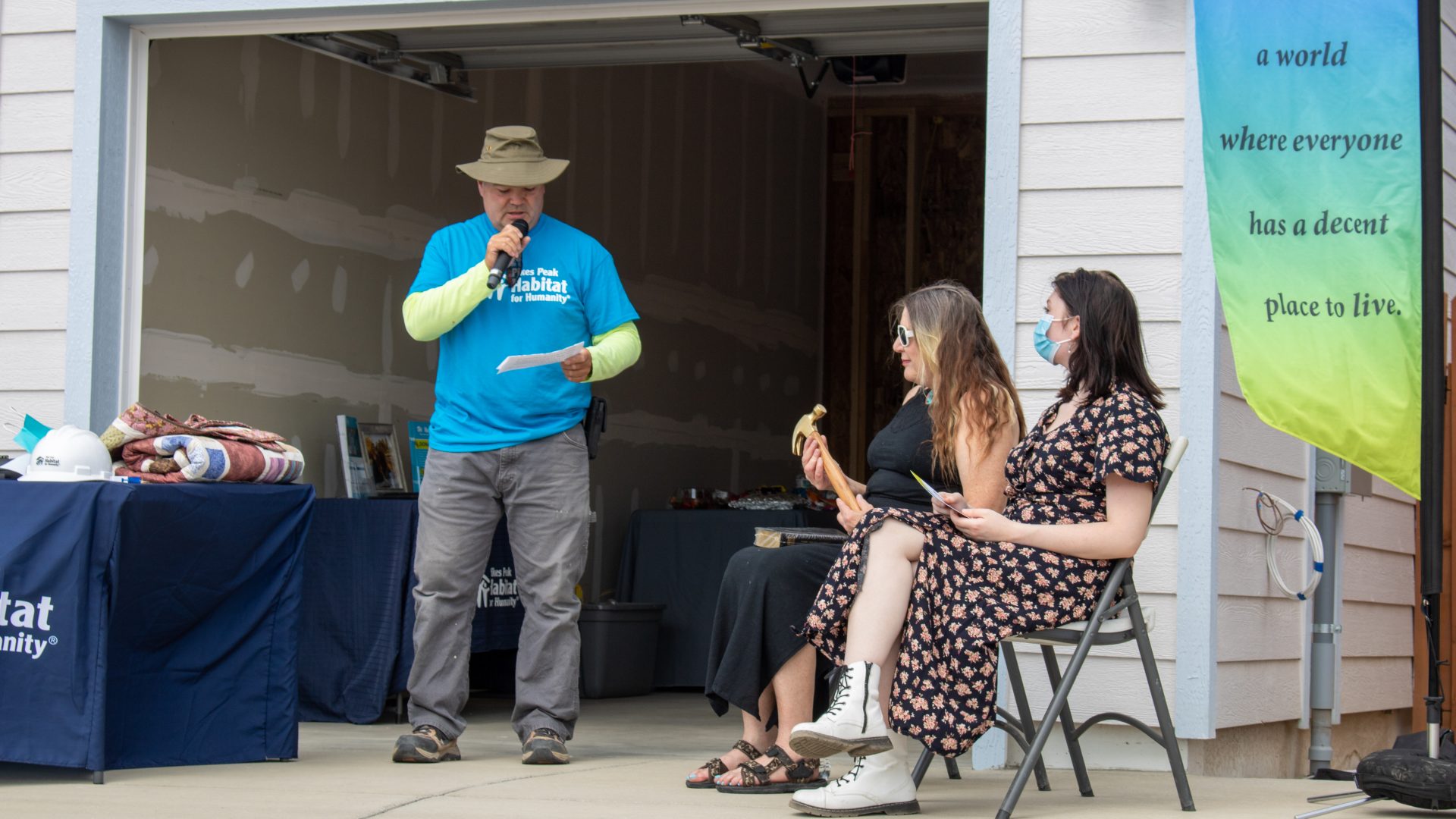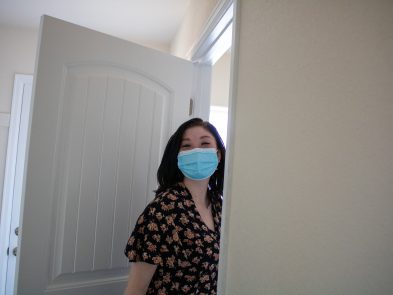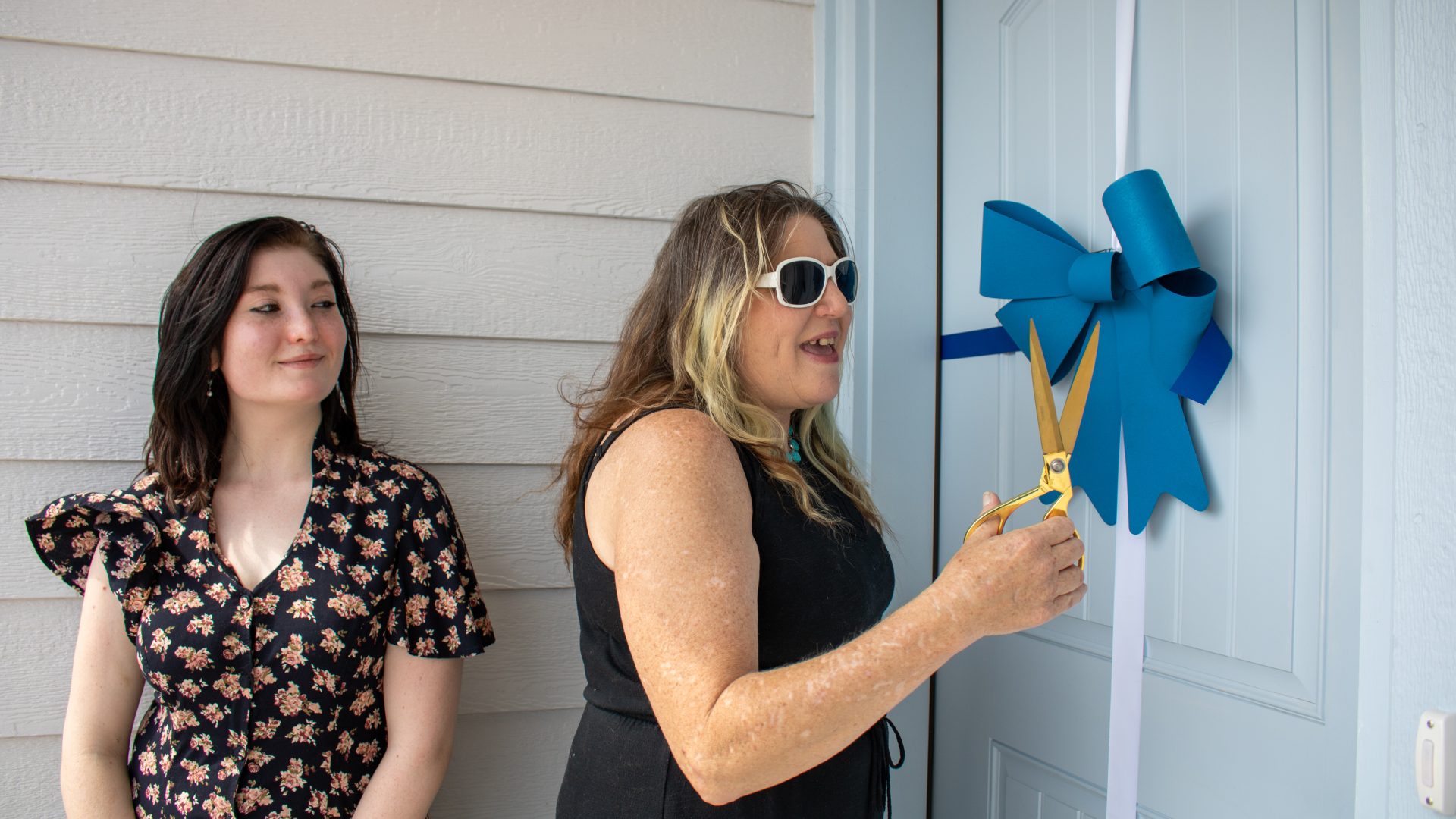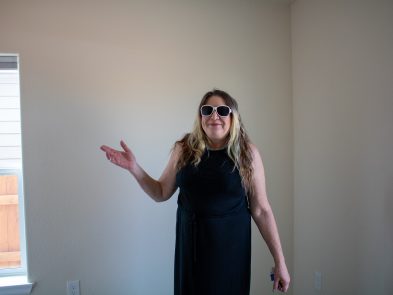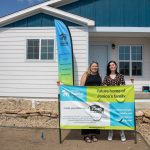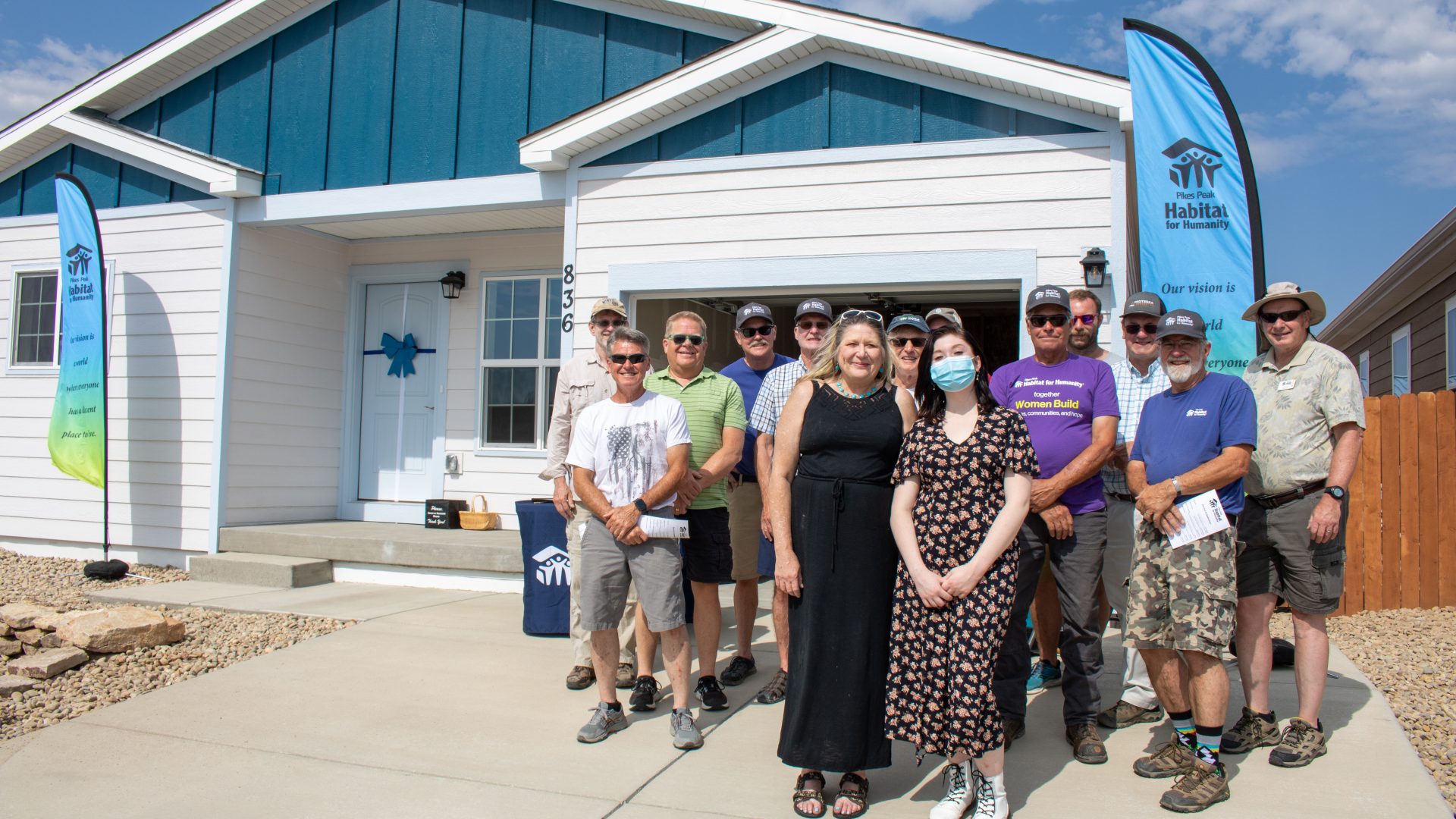Janice's Family Story
Janice and her youngest daughter, Matty, are both artists who have traveled a long path to their new home—but they’re looking forward to a place where they can settle and pursue their passions!
Janice, who is a member of the Urban Arts League and a charter member of the Wheat Ridge Art League, describes herself as “a traditional artist.” In addition to painting landscapes, she says, “I like to do Native stuff because I’m part Native. I go to powwows and research stuff. I do animals.”
Matty explains, “She does acrylic paintings. She likes to dabble in other things; she likes watercolor.”
Matty’s interest is in digital art. “I like to draw characters,” she says. “I want to go to art school for that, maybe something in animation….I’m considering maybe comics as my second interest. I have an overall urge to tell some type of stories.”
Their own story took a turn back in 2011, when Janice’s husband—Matty’s father—passed. The family had owned a small engine repair business for about two decades, working on lawnmowers, snow blowers, and weed whackers. She and her son continued to run the business for about a year. “I had a bunch of his teenage friends helping me!” she recalls. “I was delegating the work. I was good at the lawnmowers, but his little friend, I made him my weed whacker mechanic.”
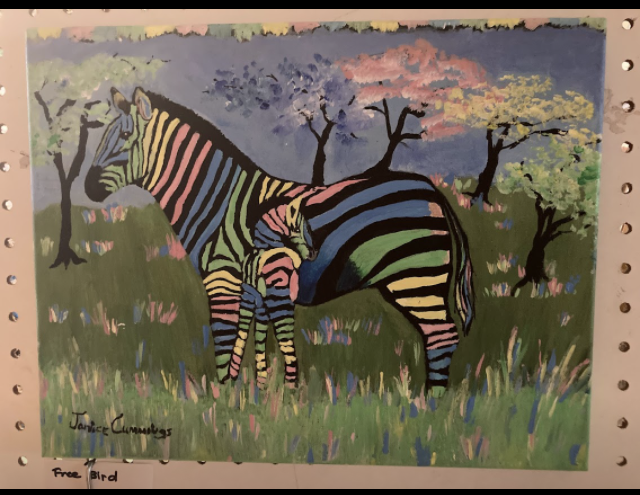
This painting and others on this page are Janice's work.
After Janice closed the business, she became ill from a kidney stone and almost died. She had laser surgery, and doctors placed a hypoallergenic stint that caused an infection. When she recovered, she and Matty lived in apartments in Arvada and Golden. Janice began corresponding with her late husband’s best friend, and they eventually started a relationship. After he became abusive, she and Matty moved to Colorado Springs, where Janice’s oldest two children, a niece, and her childhood best friend all lived, in late 2016.
Janice worked at Gymboree at the Citadel until that store closed, then she commuted to the Shops at Briargate. She lost her job when the chain went out of business but began substituting in School District 11 food service. She now manages the kitchen at a local high school. “I love my job!” she says.
When her niece decided to move out of state, Janice bought her mobile home for a dollar. But it isn’t the bargain it might sound like—the 50-year-old structure is plagued with problems.
“I’ve spent a lot of money since then just to keep it livable, and it’s barely,” Janice says. “Don’t be jumping up and down in this bathroom—you’ll go right through the floor!”
She adds, “They make everything really substandard in a mobile home anyway. It’s basically built out of paper clips and thumbtacks and cardboard! It doesn’t have a lot of insulation.”

Her son and deacons from her church—Springs Reformed—have helped with temporary furnace repairs, but even so, she has had continuing issues. She says, “It cuts off, usually around 2 a.m. when it’s negative 8 outside!”
She adds, “You can’t do laundry and run your furnace at the same time.”
They also have no air conditioning, and in a poorly insulated metal mobile home, that makes summers miserable.
“I think that’s worse,” says Matty. “In the winter, you can at least put on more clothes, get a bunch of jackets, plug in a space heater.”
When they open windows to create a cross-breeze, the flies find their way inside. So the mother and daughter often spend afternoons in a nearby diner to cool off and work on their art.
Janice notes that the ancient electrical outlets and wiring pose a fire hazard that’s almost impossible to mitigate. “You’d have to rewire the whole thing, because it was built in 1971,” she says, adding, “I’ve seen a few of these mobile homes burn down. They stink really bad, and they burn really fast.”
As the place continues to literally fall apart around them, Janice realized their living situation wasn’t sustainable. But like many workforce employees, she struggled to find another place she could afford. Her oldest daughter encouraged her to apply for Pikes Peak Habitat. “She just printed out the form and said, ‘Here, fill this out!’ and then she’d check on me. ‘Did you fill that out yet?’” Janice recalls. “Both of my daughters were very positive. I was a pessimist.”
Part of the application process is a home visit, in which Pikes Peak Habitat staff, board, and family selection committee members see where the family currently lives.
“They showed up to assess our need, and I look at them and go, ‘Come in, we’ve got plenty of need to assess!’” recalls Janice. “The mold in the bathroom, the leaks in the ceiling, and the stuff that’s missing in the ceiling, and the plumbing, the electrical, and just all of the issues that I’ve had.”
Matty says she knew they would be chosen for the homeownership program. “My teachers keep telling me to manifest things,” she comments. “We did this, now we’ve got to sign up for a lottery ticket!”
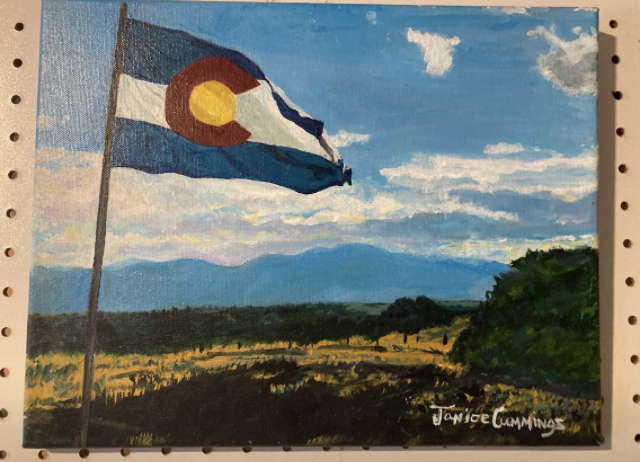
They have both volunteered on the construction site as part of their sweat equity and say it’s been a positive experience—so positive, in fact, that they co-wrote a speech about Pikes Peak Habitat for a forum at a local high school.
“It’s more of an enjoyable experience,” Matty says. “It’s not just that you’re applying to Habitat to get a house, but it’s a good experience to meet people, to volunteer.”
Janice agrees. “You learn construction skills!” she says.
When they move into their new home, they’re excited to have heat, air conditioning, working appliances, and a roof that doesn’t leak.
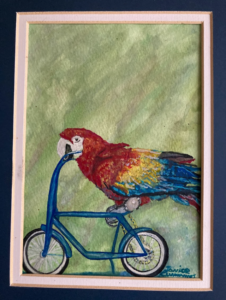
“Consistency, that’s what I’m looking forward to,” says Matty. “Not, Is the furnace going to work today? The washer broke again. Are the pipes going to freeze, and now water’s coming through the roof? Consistency, because life is already not consistent.”
Janice thinks the new home will cause less stress. Because she owns her mobile home, anything that breaks is her responsibility to fix, but she’s at the mercy of park management when they do repairs that require shutting off water or power. And they’ll have more space.
“We’ll have storage, because now we don’t have storage, just a tiny, leaky shed,” says Janice. “I put stuff in the shed because it’s the only storage I have, and then I have to take tarps and wrap everything. It’s so silly.”
She’ll also be able to display treasured collections—she especially enjoys superheroes, dolls from around the world, and Elvis. Her late husband was an Elvis fan, and she has continued adding to his collection.
Matty also looks forward to decorating her space, “just putting in little plants and knick-knacks,” she says.
And with a fenced backyard, Janice can expand the container garden she started at her mobile home. They’ll also have more room for their animals. Between them, they have three cats—Booboo, Buster, and Buttercup—as well as a rabbit and two dogs, Cheech and Civa, who showed up as a stray at the high school where Janice works.
Her adult son and daughter are thrilled to see her in hew new home, she says, and so are their friends.
“Their childhood friends that have seen my mom through growing up, they’re like, ‘Yeah, she deserves it; she’s been through too much stuff,’” says Matty. “We’re just both excited about getting into our place!”
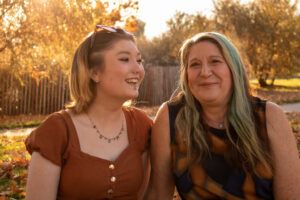
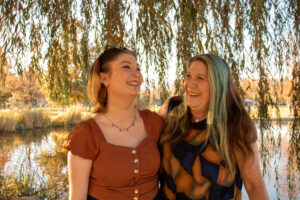
About the Fund for Humanity
Created in 1968 and predating the establishment of Habitat for Humanity International, the Fund for Humanity began as the method of accomplishing partnership housing at Koinonia Farm. The concept centered on those in need of adequate shelter working side by side with volunteers to build decent, affordable houses. The houses would be built at no profit. New homeowners’ house payments would be combined with no-interest loans provided by supporters and money earned by fundraising to create “The Fund for Humanity,” which would then be used to build more homes.

Today, The Fund for Humanity refers to a collection of funding sources, including capital from loan sale programs, loan payoffs, monthly Habitat mortgage payments, unrestricted fundraising, and net proceeds from the ReStore.
The Fund for Humanity helps finance every home we build! However, a Fund for Humanity Build references a home that was wholly supported by the Fund.


